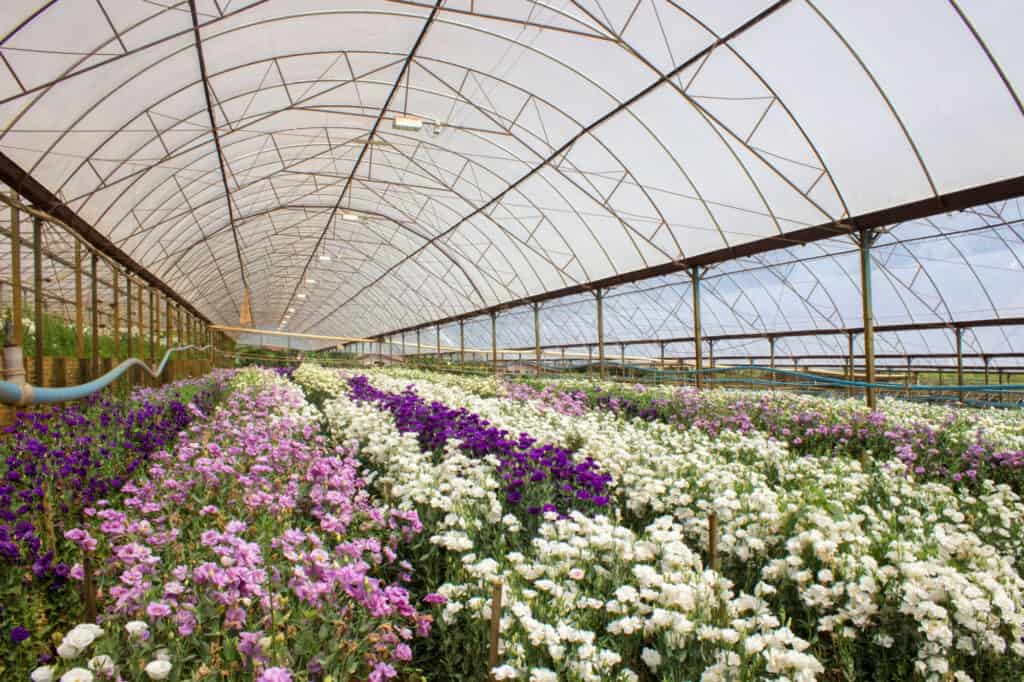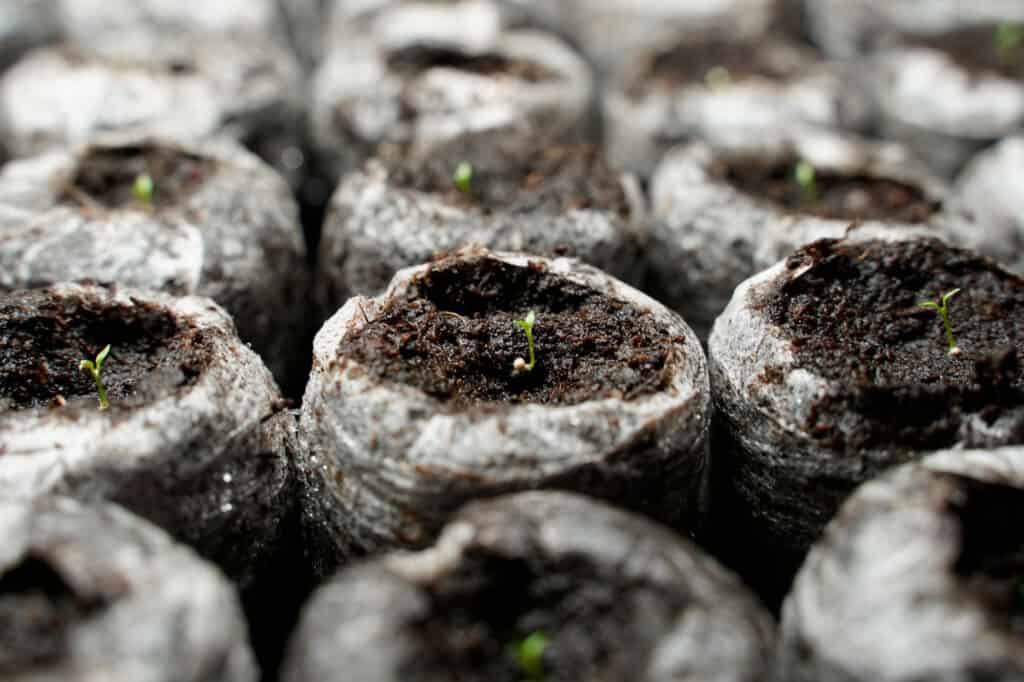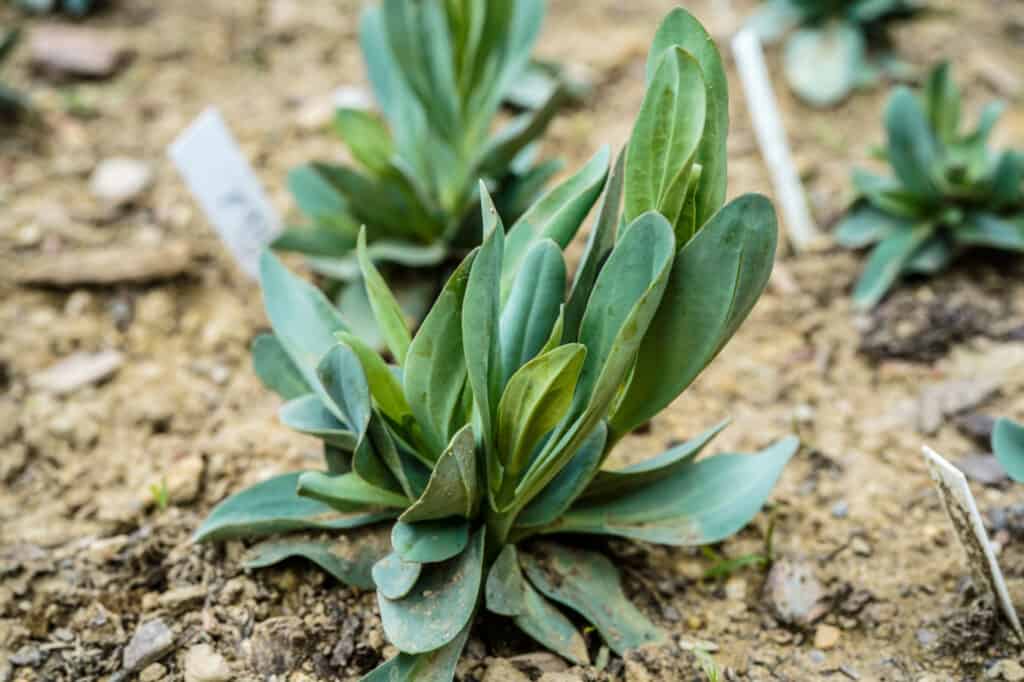Growing lisianthus seeds can be a rewarding and beautiful process. Not only can you grow your own blooms directly from seed, but you can also harvest your very own lisianthus seeds from your flowers after they’ve bloomed! But how long does it take to grow lisianthus plants from seed, and what do you do if you live in a particularly cold location and want to keep your plants alive?
Lisianthus grows slowly from seed, which is why germinating indoors starting in January or February is a must. Keep these tiny seeds warm once planted in soil, and do not cover them with dirt- they need light in order to germinate. Most lisianthus plants aren’t ready to be planted outdoors until late spring, but their blooms should develop in late fall! You can also dig up your plants and overwinter them indoors, keeping them as perennials rather than annuals.
If you’re ready to try your hand at growing lisianthus plants from seed, here’s how to do it.

Lisianthus grows slowly from seed, which is why germinating indoors starting in January or February is a must.
©AyahCin/Shutterstock.com
| Lisianthus Seeds | How to Grow |
|---|---|
| Hardiness Zones | 8 through 10 as a perennial; 5 through 8 as an annual |
| Popular Lisianthus Varieties | “Echo”, “Voyage”, “Heidi”, “Charisma”, “Arena” |
| Harvesting Lisianthus Seeds | Harvest in late fall or early winter, once seed pods have turned brown |
| Time of Year to Plant Seeds | Start early indoors, typically in January or February |
| Things to Note | These beautiful flowers need plenty of time to grow, but you can always keep them alive by bringing them indoors for the winter! |
An Overview of Lisianthus and Popular Varieties

Most lisianthus starts are expensive, especially if you live in a region where your flowers will have to be grown as annuals given the cold climate.
©ROBERTA BLONKOWSKI/Shutterstock.com
Gorgeous and heat-loving, lisianthus flowers are a favorite in wedding bouquets, cottage gardens, and as cut flowers. Most lisianthus starts are expensive, especially if you live in a region where your flowers will have to be grown as annuals given the cold climate. These beauties also take a long time to germinate and produce flowers- nearly six months. However, they are definitely worth the wait, and there are ways you can keep your lisianthus plants as perennials too!
Popular Lisianthus Varieties
If you are planning on ordering some lisianthus seeds to start your planting journey, here are some popular varieties or cultivars to consider:
- “Echo“. Found in a variety of colors, with unique white edging on all petals.
- “Voyage“. Multiple soft colors and ruffled petals, and produces flowers by early summer.
- “Arena“. Typically double blooms in every color imaginable, including a light green.
- “Heidi“. Long bloom time of roughly six weeks, with a lovely pink variety available.
- “Charisma“. Many different color combinations in a dreamy rose shape.
Germinating and Growing Lisianthus from Seed

You need to take care when watering lisianthus seeds, as too much water will wash your seeds away.
©Kathy D. Reasor/Shutterstock.com
With the right setup, you can grow lisianthus indoors from seed. This could save you some money in the long run, especially if you are able to save your plants or seeds for future use! Here’s how to germinate lisianthus indoors:
- Handle your seeds with care. Lisianthus seeds are extremely small, often packaged with a coating on each seed that dissolves in water. This coating is ideal for those of you hoping to start the seeds inside, as it will make them easier to handle. Spread them out on a white piece of paper or visible surface and use tweezers to distribute them properly.
- Fill your desired planting container. You should start lisianthus seeds in individual pots or cups, or you can fill a flat with potting soil. These seeds prefer to be sown directly on the surface of the soil, but you should also prepare a plastic cover for your planting containers to promote humidity and moisture control.
- Place a few seeds per container or small area. Not all of your seeds may germinate, so planning ahead is a good idea. Gently place 2 to 3 seeds atop your soil, taking care not to bury them as they need light in order to germinate.
- Mist your plants and cover them with plastic. You need to take care when watering lisianthus seeds, as too much water will wash your seeds away. Gently mist your new seedlings and cover them with a plastic dome or wrap.
- Keep your seedlings under a grow light and in a warm location for roughly 10 days. Most viable seedlings will germinate after this point in time, and you can remove their plastic cover. You’ll still want to keep your seedlings indoors, but they can handle a bit more light exposure once they have sprouted.
- Thin your seedlings if necessary, and keep your small plants moist as they develop. Lisianthus will not be ready for outdoor temperatures until late spring or early summer, depending on your region. Keeping your young plants indoors is your best bet for proper root development and preparation for planting outside in the summertime.
Harvesting Lisianthus Seeds

Lisianthus will not be ready for outdoor temperatures until late spring or early summer, depending on your region.
©Kathy D. Reasor/Shutterstock.com
Given how expensive lisianthus plants are when purchased as starts, you may want to gather your lisianthus seeds from your existing plants at the end of their growing season. There is one important thing to note about this process, however. Most lisianthus flowers do not grow or produce seeds that are true to their parent plants, which means that you will likely grow an entirely different flower compared to the one that you collected seeds from.
However, most gardeners are excited by this fact, especially when you consider that you could get an entirely new variety of lisianthus flower! Here’s how to gather the seeds from your existing plants at the end of the year:
- Wait until late fall or early winter, once your flowers have completely turned brown. You will likely notice that your blooms have developed seed pods, typically round in shape. This is what you will be collecting.
- Gather your seed pods. Use shears or scissors so that you don’t disturb the pods too much as you gather them. If you aren’t careful, they may burst open and spread microscopic seeds throughout your garden!
- Gently crack open your seed pods and save the tiny seeds inside. These are your lisianthus seeds, and you can keep them in an envelope or jar to be used next year!
Can I Overwinter My Lisianthus Plants?

You can overwinter lisianthus plants indoors if you dig up your plants and keep them in a container instead.
©Kathy D. Reasor/Shutterstock.com
Growing lisianthus plants is tough work, but very rewarding once you see those beautiful blooms. However, can you overwinter your plants so that all of your hard work isn’t wasted at the end of the growing season? The short answer is, yes, you can overwinter lisianthus plants indoors if you dig up your plants and keep them in a container instead.
You won’t likely experience any new growth or plant development on your lisianthus plant during this time, as it will be dormant. However, keeping your plant inside for the winter and repotting it outside is the best way to keep this perennial happy in colder climates!
Up Next
- Cosmos Seeds: Easily Grow This Annual Flower!
- Columbine Seeds: How to Plant and Grow This Perennial Beauty
- Lupine Seeds: Grow This Beautiful Wildflower in Your Own Garden
The photo featured at the top of this post is © Kathy D. Reasor/Shutterstock.com
Sources
- Study on growth, flowering and seed production of eight nandini Eustoma grandiflorum varieties, Available here: https://www.researchgate.net/profile/Md-Islam-369/publication/272179805_19_STUDY_ON_GROWTH_FLOWERING_AND_SEED_PRODUCTION_OF_EIGHT_NANDINI_Eustoma_grandiflorum_VARIETIES/links/54de53e50cf2966637863705/19-STUDY-ON-GROWTH-FLOWERING-AND-SEED-PRODUCTION-OF-EIGHT-NANDINI-Eustoma-grandiflorum-VARIETIES.pdf
- Lisianthus, Available here: https://link.springer.com/chapter/10.1007/978-1-4020-4428-1_24
Thank you for reading! Have some feedback for us? Contact the AZ Animals editorial team.






